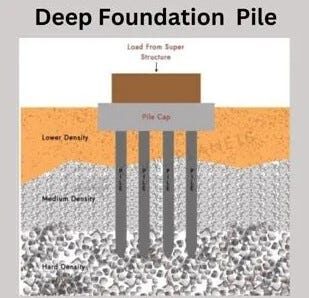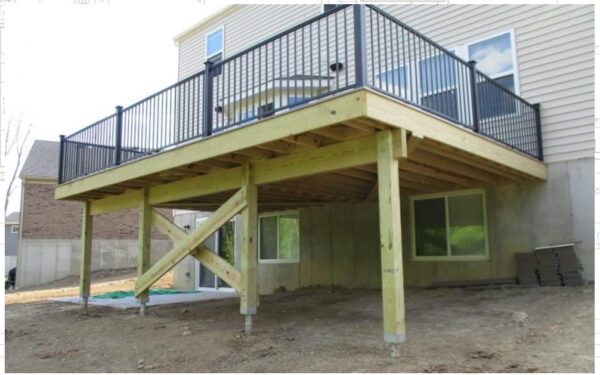The dynamic cone penetration test is one of several in-situ soil testing methods available to geotechnical engineers.
Other methods include the Standard Penetration Test (SPT), Cone Penetration Test (CPT), and Flat Dilatometer Test (DMT). Each method has its advantages and limitations, and the choice of test depends on factors such as soil type, project requirements, and budget.
The DCP test is an effective tool for evaluating the bearing capacity of soils. By measuring the penetration resistance of the cone tip, engineers can estimate the soil’s ability to support loads imposed by structures or pavements.
The DCP test results can be correlated with other soil properties, such as shear strength and stiffness, to develop a comprehensive understanding of the soil’s load-bearing characteristics.
What is Dynamic Cone Penetration Test?
The Dynamic Cone Penetration (DCP) test is an in-situ soil testing method used to assess the strength and bearing capacity of subgrade soils.
It involves driving a cone-tipped rod into the ground using a sliding hammer and measuring the penetration depth per blow. The DCP test provides a quick and cost-effective way to evaluate soil properties for various civil engineering applications.
Purpose of Dynamic Cone Penetration Test
The primary purpose of the DCP test is to determine the in-situ bearing capacity and compaction level of soils.
It helps engineers assess the suitability of subgrade soils for supporting structures, pavements, and earthworks.
The DCP test results can be used to estimate the California Bearing Ratio (CBR) and modulus of subgrade reaction, which are crucial parameters for pavement design and shallow foundation design.
DPC Apparatus
The DCP apparatus consists of a cone-tipped rod, a sliding hammer, and a measuring device. The cone tip is typically 60° with a base diameter of 20 mm. The hammer weighs 8 kg and falls freely from a height of 575 mm.
The measuring device records the penetration depth per blow, which is then used to calculate the Dynamic Cone Penetration Index (DCPI).

Dynamic Cone Penetration Test Procedure
The DCP test procedure involves the following steps:
- Drive the cone-tipped rod into the ground using the sliding hammer.
- Record the number of blows required to achieve a certain penetration depth (usually 10 cm increments).
- Continue the test until the desired depth is reached or refusal is encountered.
- Calculate the DCPI by dividing the total penetration depth by the number of blows.

Geotechnical Site Investigation Techniques
The DCP test is a valuable tool for geotechnical site investigations.
It can be used in conjunction with other techniques, such as soil boring, sampling, and laboratory testing, to develop a comprehensive soil profile.
The DCP test is particularly useful for assessing the spatial variability of soil properties across a site and identifying weak or problematic zones that may require further investigation or remediation.
Shallow Foundation Design Parameters
The DCP test results can be used to estimate key parameters for shallow foundation design, such as the allowable bearing capacity and settlement.
Engineers can correlate the DCPI values with empirical relationships or use them as input for analytical methods to determine the foundation size, depth, and reinforcement requirements.
The DCP test provides a quick and economical way to obtain design parameters for small to medium-sized projects.
Subgrade Strength Evaluation
The DCP test is commonly used to evaluate the strength and stiffness of subgrade soils for pavement design.
The DCPI values can be correlated with the CBR, which is a key input parameter for flexible pavement design methods.
The DCP test allows engineers to assess the subgrade conditions at multiple locations along a road alignment and identify areas that may require stabilization or improvement.
Pavement Design Soil Testing
In pavement design, the DCP test is used to characterize the subgrade soil properties and determine the required pavement thickness.
The DCPI values are correlated with the CBR using empirical relationships, which vary depending on the soil type and region.
The CBR values are then used in pavement design equations to calculate the structural number or layer coefficients for flexible pavements.
Correlation Between DCP and CBR
Several researchers have developed correlations between the DCPI and CBR test for various soil types and conditions.
These correlations allow engineers to estimate the CBR value from the DCP test results, eliminating the need for time-consuming and expensive laboratory tests.
However, it is essential to use the appropriate correlation equation for the specific soil type and region to ensure accurate results.
Advantages of Dynamic Cone Penetrometer
The DCP test offers several advantages over other soil testing methods:
- Quick and easy to perform on-site
- Economical and requires minimal equipment
- Provides continuous soil strength profile
- Suitable for a wide range of soil types
- Results can be correlated with other soil properties
Conclusion
The Dynamic Cone Penetration test is a versatile and reliable tool for evaluating the in-situ strength and bearing capacity of soils.
It is widely used in geotechnical site investigations, pavement design, and shallow foundation design.
By understanding the principles, procedures, and applications of the DCP test, civil engineers can make informed decisions and optimize their designs for various projects.







